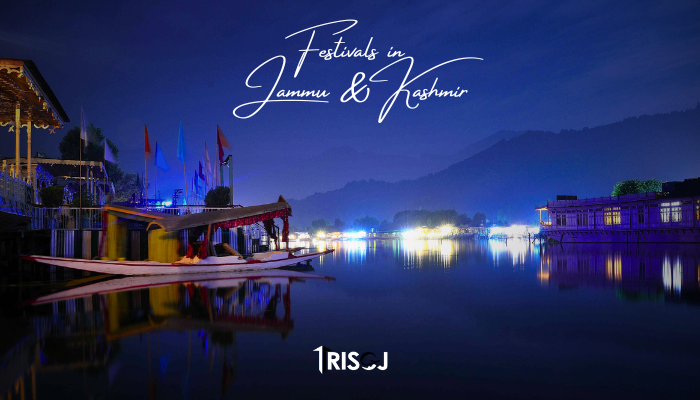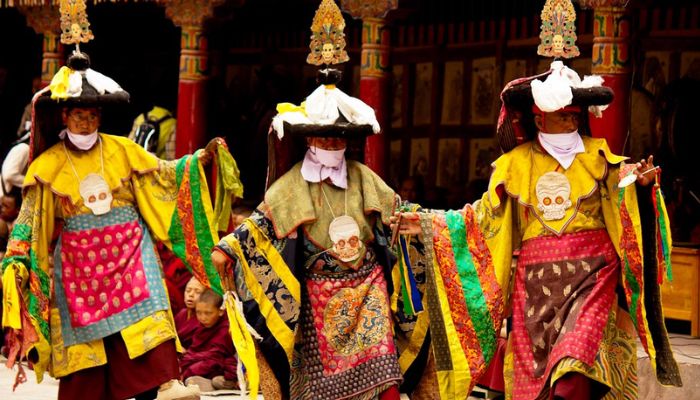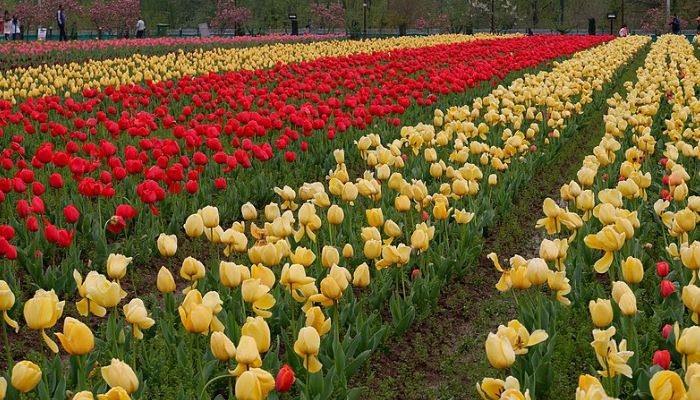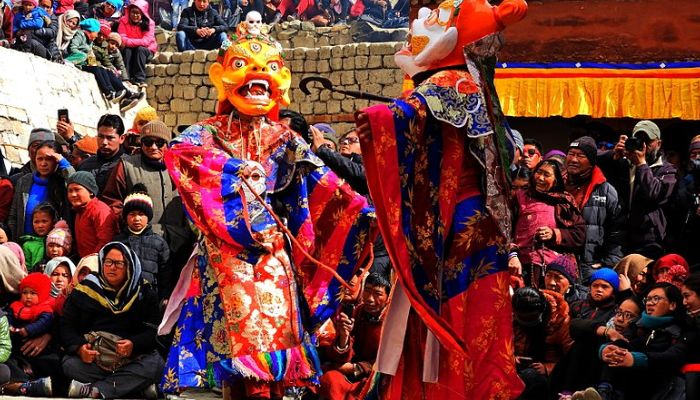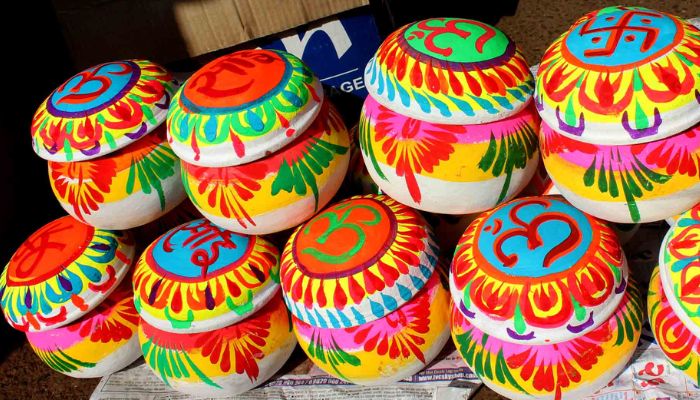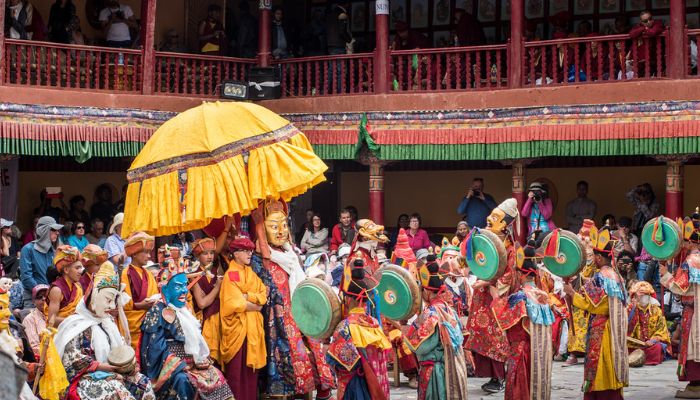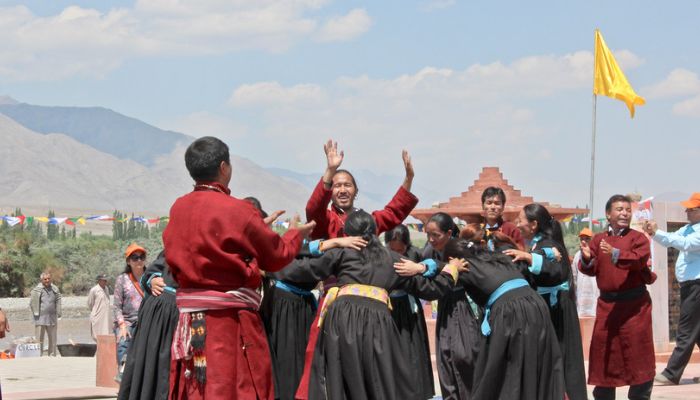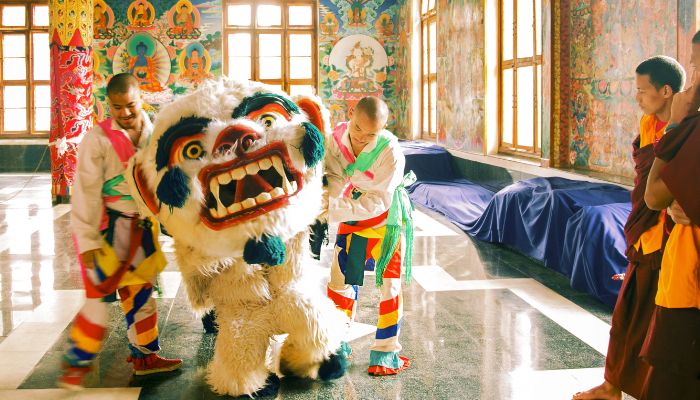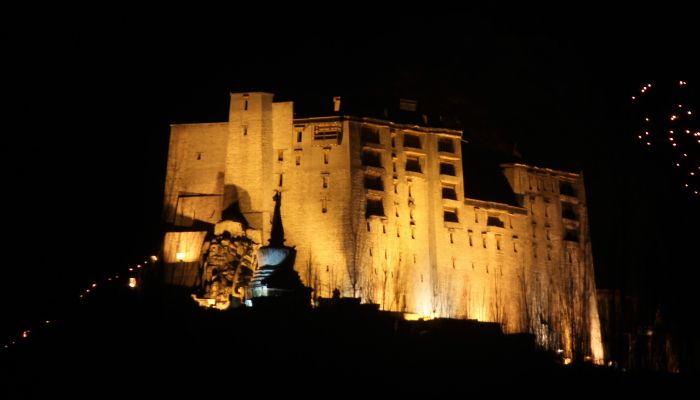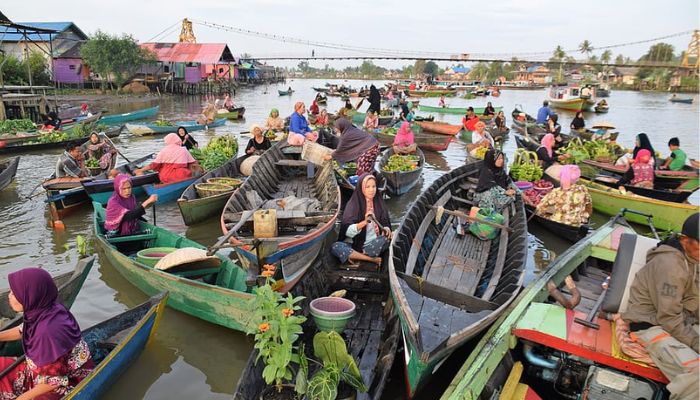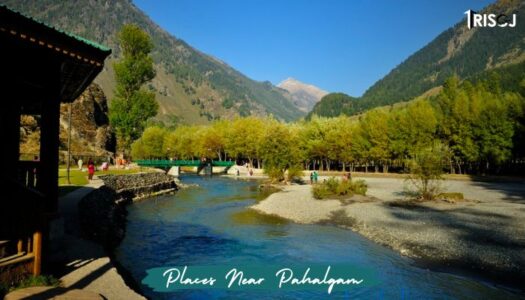The famous festivals in Jammu and Kashmir are nothing more than a mere glimpse of the unique rich culture that makes this union territory what it truly is. In modern days, we forget that the regions of Jammu, Kashmir and Ladakh used to be important havens of knowledge, spirituality and art for the ancient Hindu kings and pandits, Tibetan Buddhist monks as well as Mughal emperors and Sufis. As tourists, our best bet to explore the leftover impact of these ancient historical periods is to become one with the crowds when these famous festivals in Jammu and Kashmir actually take place. Which of these festivals is meant for you? Let us take a look.
Famous Festivals in Jammu and Kashmir – A Distinct Culture In The Lap Of Himalayas
1. Hemis festival
Ladakh is undoubtedly the land of monasteries and one of the most revered places in Kashmir. Hemis Monastery is one of the most legendary complexes for monks and Buddhist devotees to exist in all of Southern Asia. It is no surprise then that the Hemis Festival conducted by this monastery every year to celebrate the birth of Guru Padmasambhava – it is an occasion that brings worshipers and tourists from all around the world to this deserted Valley to witness the many masked dances, rituals, craftworks etc that take place during the biggest of festivals in Jammu and Kashmir.
Entry fee: no entry fee
Opening and closing timings: no official opening and closing timings
Time taken to visit: two-day festival, starting on the 10th day of the Tibetan Lunar Month.
2. International tulip festival
Every year, somewhere between March and May, Srinagar hosts one of the biggest flower festivals in Jammu and Kashmir and the largest tulip festival in all of Asia. The tulips that grow in the valleys around Srinagar are said to be some of the most luxurious varieties ever seen. You will find garden owners, cultivators and florists take part in the international tulip festival every year. Some excellent tulip producers from other values in the union territory as well as surrounding states come to Srinagar to attend this festival. Painters, sculptures and craftspersons display proficient creations related to the theme of tulips in this festival.
Entry fee: No Entry cost
Opening and closing timings: no official opening or closing timings
Time taken to visit: 15 days, usually conducted between March and May
3. Dosmoche
This is definitely one of the biggest religious and prayer festivals in Jammu and Kashmir for Hindu and Buddhist devotees. The day of Dosmoche is a gazetted holiday in the area of Ladakh and is celebrated in Leh, Diskit and Likir. Even though this festival primarily takes place inside the monasteries it is not a monastery festival. Instead, this is the time when through religious masked dances, holy chanting and the sounding of cymbals, the surrounding town and city is purified of all evil presence. This is a two-day festival and attendees wear special colourful clothes. The Moti Market Fair is also a popular addition to the city of Leh during this time.
Entry fee: No Entry cost
Opening and closing timings: no official opening or closing timings
Time taken to visit: 2 days, 28 and 29th day of the 12th month of the Tibetan lunar calendar
4. Makar Sankranti
Harvest festivals are common all over India, the only difference being how the rituals are performed and what names these harvest festivals are given. The same festival that is known as Lohri in Punjab and Pongal in Tamil Nadu is celebrated as Makar Sankranti in Jammu and Kashmir. Makar Sankranti is one of the most important festivals in Jammu and Kashmir that is celebrated all over the union territory. The various holy rivers and springs become important bathing sites and havans are performed. Unmarried boys ask newlyweds for gifts or money. Many young boys also perform hajj dances in the town square or market streets.
Time taken to visit: one day, on the 14th or 15th of January every year
5. Ladakh festival
This is a relatively new, revamped way that the tourism department of Jammu and Kashmir has come up with to give tourists a taste of the culture of Ladakh. This is one of the most famous festivals in Jammu and Kashmir although it does not have any historical significance in Ladakh as such. A little bit of every important cultural or historical aspect of Ladakh is shown to visitors during this period – primarily to attract and persuade tourists with the charm that this place has always held.
Ladakhi, Kashmiri and Tibetan food are one of the biggest attractions of this festival. Traditional music, traditional dances and polo matches take place all over the multiple values that come under the Ladakh province. During this festival you will find traditional artists coming to the capital city from unknown and unreachable hamlets – you can purchase their artwork and connect with them for future ventures!
Time taken to visit: the first 15 days of September
6. Sindhu Darshan festival
One of the most unique festivals that speak of the interconnected values and beliefs of different religious communities in India, this one is a must-visit for all tourists. Sindhu Darshan is celebrated in Shey and is one of the most underrated festivals in Jammu and Kashmir. Sindhu refers to the river Indus, the first river which mothered a large-scale civilization in India. This day has no bounds and people from all over the Union territory come to take part in the main cultural and patriotic rituals. Different dances and music is encouraged – even the ones that are not religious in nature. The hosting ceremony is conducted by a religiously heterogeneous group of people. Tribute is paid to the Indian army and martyred soldiers.
Entry fee: No Entry cost
Opening and closing timings: no official opening or closing timings
Time taken to visit: 3 days, starting on the full moon day of Guru Purnima
7. Losar
The Ladakhi new year is the most awaited festival in Jammu and Kashmir, at least so for the eastern half of the union territory. All monasteries open their gates to tourists and locals who come visit, offer donations and pray for a fulfilling and prosperous year. The festival stretches on for two whole weeks, though the first three days are considered to be the most important. Purchasing colourful goods for decorating homes, visiting family and friends, organizing cultural events in most of the neighbourhoods and decorating the streets with fairy lights and flowers are common during this time. While once upon a time this was a Buddhist festival, today it is predominantly considered to be a celebration for all of Ladakh and people of all religions take part in it.
Time taken to visit: 2 weeks
8. Galdan Namchot
This big day is celebrated just before the new year festivities begin in Ladakh. Galdan Namchot is one of the most coveted festivals in Jammu and Kashmir for National and International tourists, and many people come to Ladakh only to visit monasteries during this period. Lighting up public buildings and shrines with butter lamps and fairy lights is the first step towards preparing for Galdan Namchot. Special delicacies are cooked which are then distributed among friends and family. Like many other festivals in India, this festival celebrates the victory of light over darkness and good over evil. This day is also the birthday of Je Tsongkhapa, the founder of the Gelugpa Sect of Buddhism. Stories of his life and other Jataka tales are enacted at various cultural events.
Time of Celebration: one day, 25th day of the 10th month of the Tibetan lunar calendar
9. Saffron festival
Ancient Indian texts always referred to Kashmir as a wealthy state because of its production of saffron. Saffron is a luxury condiment used all over the world as a flavouring and colouring agent. And saffron has been cultivated in Kashmir since the earliest times. The saffron festival is however a new addition to the famous festivals of Jammu and Kashmir which is held mostly due to the initiative of the Kashmir Government. These few days are seen as a unique opportunity for locals to showcase their high-quality saffron to international traders and achieve newer roots to prosperity as saffron farmers. You can find authentic, flavourful saffron at an affordable price during the festival.
Time of Celebration: 3 days somewhere between late October and early November
10. Shikara festival
Srinagar is not the only city where Shikaras are famous. These colourful traditional boats have an important presence in all low altitude lakes in Anantnag and near Sonmarg. This is the second government-encouraged addition to the long list of festivals in Jammu and Kashmir because the administration in these regions believes that a warm celebration of the festival will bring the traditional values of Kashmir back to life and help locals find pride in their culture and lifestyle. Till now this initiative is going great and many adventurous sports like the snake boat race, dragon boat race and polo have become a part of this festival.
Celebration: 2 to 3 days somewhere between July and August
11. Maa Kali Bahu Puja and Mela
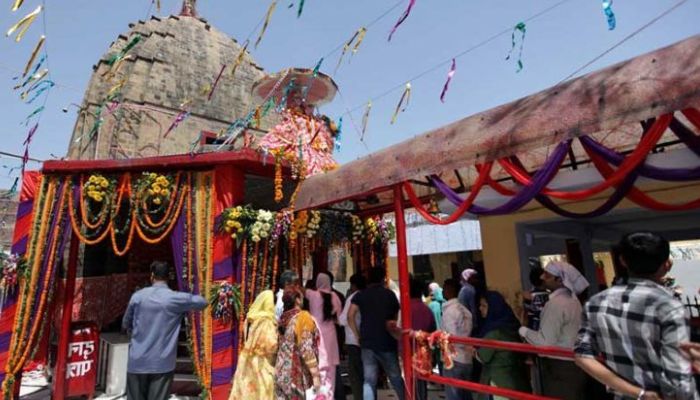
The Bahu Fort is one of the biggest attractions in Jammu. But did you know that if you visit Jammu in the right season, you could also attend one of the most important festivals in Jammu and Kashmir right here? The Babu Fort houses an ancient and revered Maa Kali temple which becomes a devotional location during the Ram Navami festival. Maa Kali is worshipped and devotees are allowed to visit the temple and seek blessings. There is a fair which is held during this time outside the Bahu fort and this is popularly known as the Bahu Mela.
Time of celebration: 10 days during Navratri
Frequently Asked Questions?
A. The Maa Kali puja and Bahu Mela are held on the eve of Ram Navami every year in Jammu.
A. There is a huge festival held in Ladakh every year which aims to celebrate the unsung heroes of this region while also displaying the rich traditional culture and values they hold to the tourists of the world. This festival is known as the Ladakh festival.
A. A Tibetan Buddhist festival known as the Spituk Gustor Zanskar is celebrated at the Spituk, Thiksey and Karsha Nanskar monasteries. On this day the defeat of anti-Buddhist emperor Langdarma is showcased and several dances are held to reenact this fateful event.
Conclusion
Kashmir travel packages are usually hard to find for these specific festival dates because most of them are usually booked a long time in advance. This is why it makes sense to follow the same ideology and make an early booking for your chosen festivities. What are you waiting for? Contact TRISOJ for the most effortless vacation of your life!


